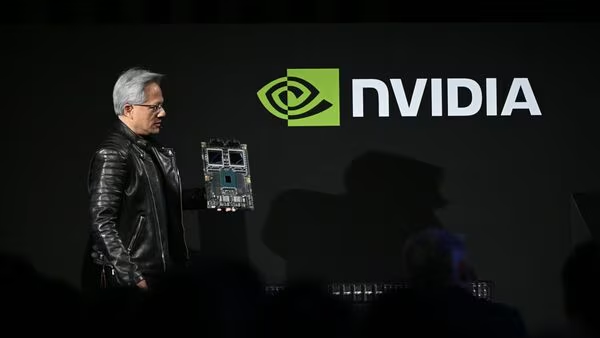At the highly anticipated Consumer Electronics Show (CES) 2025 in Las Vegas, Jensen Huang, CEO of Nvidia, delivered a keynote that highlighted the company’s latest innovations in gaming and artificial intelligence (AI). As the tech world watched, Huang unveiled a new family of gaming chips and made bold predictions about the future of general robotics, touting the upcoming “ChatGPT moment” for the sector.
The announcements were a glimpse into Nvidia’s vision of the future, where AI and gaming technologies converge to create unprecedented experiences.
Nvidia’s Next-Generation Gaming Chips: Powering the Future of Graphics
Nvidia’s latest gaming chips, built on the company’s Blackwell AI technology, promise to revolutionise how gamers experience graphics. Huang announced that the new chips would deliver movie-quality visuals, with real-time rendering capabilities that blur the line between gaming and cinematic experiences. According to Huang, the new chips are up to twice as fast as their predecessors, and they will be available at prices ranging from $549 (£438) to $1,999.
In a live demonstration during his keynote, Huang showcased the impressive capabilities of the new gaming chips, displaying highly detailed graphics that included intricate textures and complex maneuvers. The demo left many in the audience, including robotics graduate student Gary Yang from the California Institute of Technology, in awe. “It was incredible that they can do this in real-time,” Yang commented, noting that such graphics were traditionally seen only in pre-rendered formats.
These advancements in gaming technology are set to become available to consumers starting in late January 2025, with industry insiders and early adopters eager to get their hands on the new hardware.
Introducing Cosmos: AI-Powered Video Generation for Robotics and Self-Driving Cars
In a significant shift towards the integration of AI into real-world applications, Huang also introduced Cosmos, an AI model that could transform how robots and self-driving cars are trained. Cosmos is capable of generating synthetic video content based on text descriptions, allowing developers to create simulated environments that obey the laws of physics. This synthetic data can then be used to train robots and autonomous vehicles at a fraction of the cost of current methods.
The ability to generate training data at scale and at a lower cost could be a game-changer in fields like robotics, where simulating real-world scenarios can be both expensive and time-consuming. Huang suggested that the “ChatGPT moment” for general robotics is just around the corner, thanks to advances in AI and simulation technologies like Cosmos.
The enabling technologies I’ve been talking about are going to make it possible for us in the next several years to see very rapid breakthroughs—surprising breakthroughs—in general robotics,”
“Huang predicted, though he acknowledged that more training data would be needed to fully realize the potential of these innovations.

